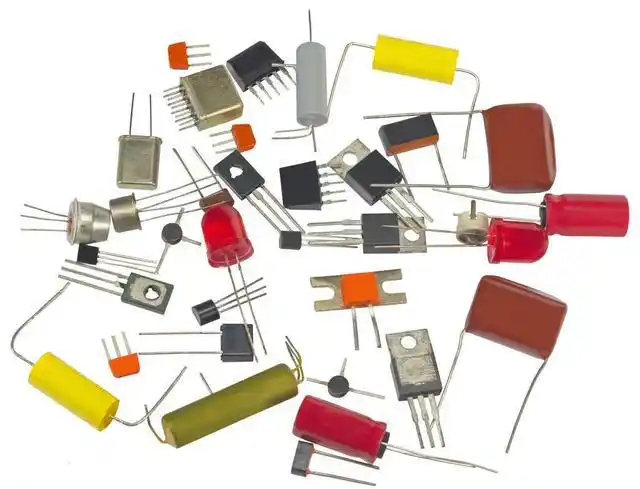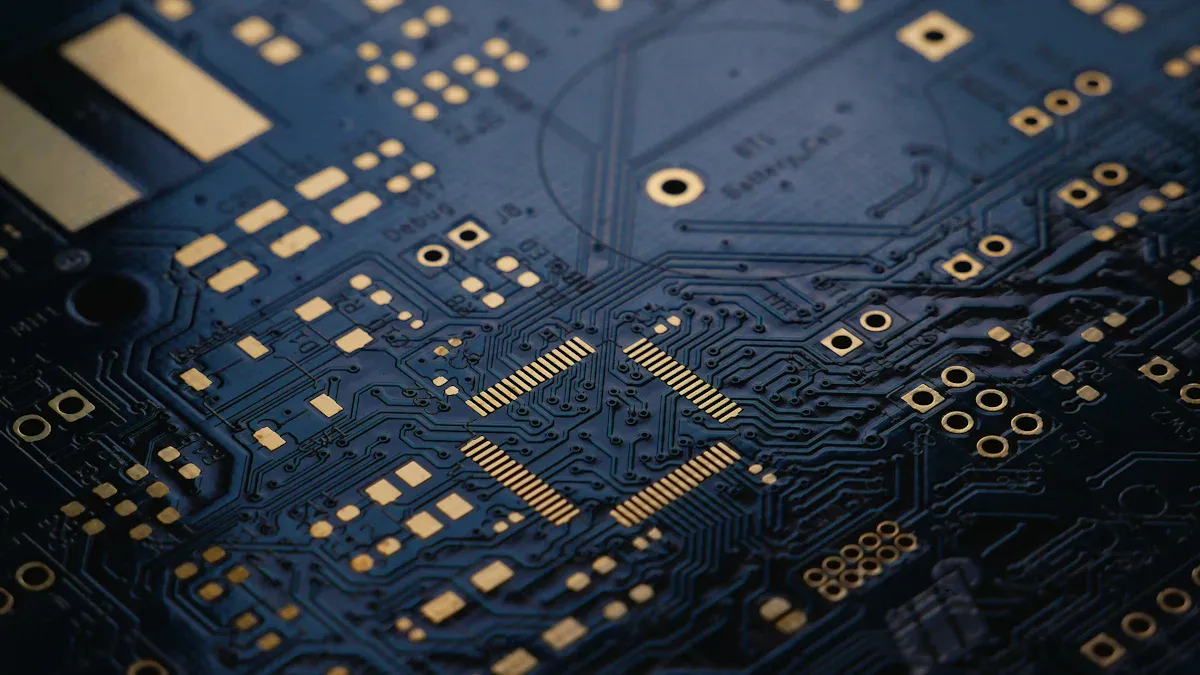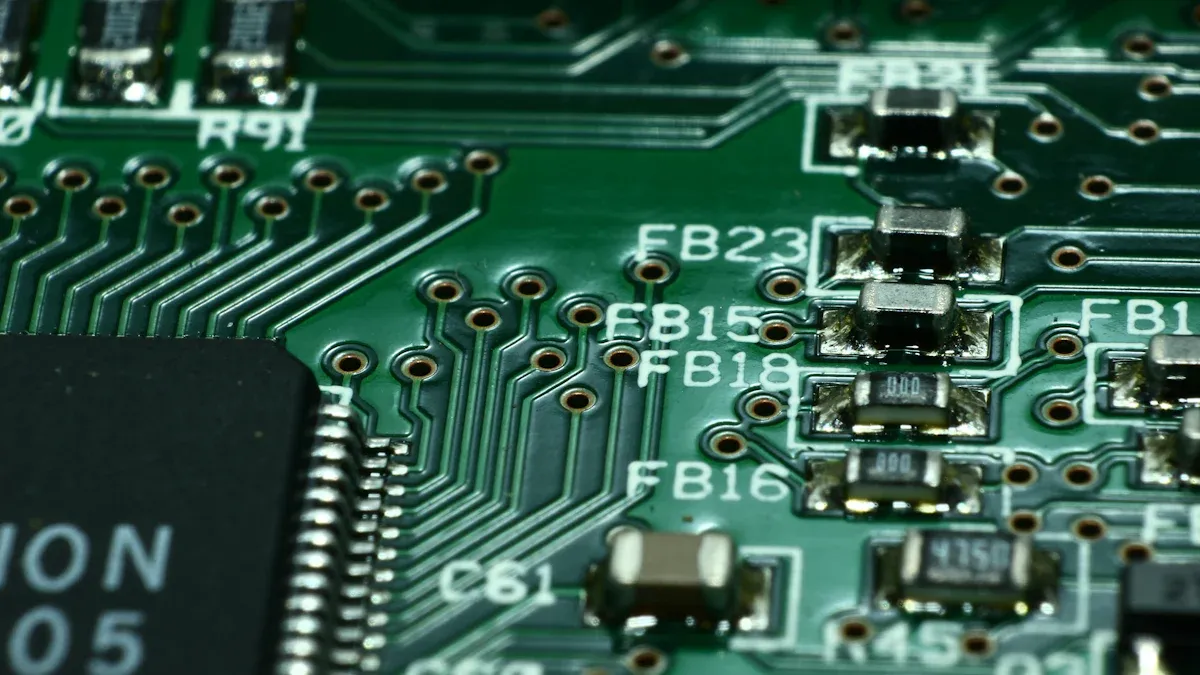Discrete Semiconductor Basics for Picking the Right Diode

Choosing the right discrete semiconductor diode is very important for good circuits. A diode's features like voltage, current, and speed affect how it works. For signal boosting, the discrete semiconductor needs to switch fast without errors. Motor circuits require diodes that handle high currents and stop reverse voltage. Picking the right diode makes circuits work well and last long. A good discrete semiconductor distributor can help find the best diode for your needs. This ensures the best performance.
Key Takeaways
Picking the right diode is very important for circuits. It helps the circuit work well and last longer.
Learn about diode features like voltage and current limits. Matching these to your circuit stops overheating and damage.
Fast diodes are needed for signal circuits. They keep signals clear and save energy.
In motor circuits, diodes stop voltage spikes. This keeps the motor safe and makes it last longer.
Use a checklist to pick diodes. Check type, voltage, current, speed, and heat control for good performance.
Understanding Discrete Semiconductor Diodes

What is a Diode?
A diode is a simple part in electronics. It lets current flow in only one direction. It is made from a semiconductor, often silicon, with two ends: the anode and the cathode. If the anode has more voltage than the cathode, the diode allows current to pass. This is called forward bias. In reverse bias, the diode stops current, acting like a one-way door for electricity.
Diodes are very important in electronics today. They are used in many devices like power supplies, signal systems, and lights. For example, light-emitting diodes (LEDs) turn electricity into light. This makes them useful for screens and lighting.
General Purpose of Diodes in Circuits
Diodes have many jobs in circuits. Their main job is to control how current flows. This is important for turning alternating current (AC) into direct current (DC). Diodes also protect circuits by stopping reverse voltage, which can harm parts.
In signal systems, diodes help clean and boost signals for better data transfer. Photodiodes, another type, sense light and are used in fast data communication. Zener diodes keep voltage steady, protecting devices from sudden voltage changes.
Some common uses of diodes are:
Rectification: Changing AC to DC in power systems.
Signal Processing: Boosting and cleaning signals in communication.
Voltage Stabilization: Protecting devices from voltage spikes.
Lighting: Using LEDs for lights and displays.
Why Diode Selection is Crucial for Circuit Performance
Picking the right diode is key for good circuit performance. Each diode has special features like reverse voltage, forward voltage, and switching speed. These decide how well it works in different tasks.
For example, reverse voltage shows how much voltage a diode can handle when blocking current. Forward voltage shows the energy lost when the diode allows current. Switching speed is important for fast circuits, as it shows how quickly the diode changes from blocking to allowing current.
The table below explains important diode features:
Performance Metric | Description |
|---|---|
Reverse withstand voltage | Highest reverse voltage the diode can handle. |
Forward conduction voltage | Voltage drop when current flows, affecting energy use. |
Reverse recovery time | Time to switch from blocking to allowing current, important for fast circuits. |
Junction capacitance | Affects high-frequency work by storing charge. |
Choosing a diode that fits the circuit's needs ensures it works well and lasts long. For example, small-signal diodes like the 1N4148 are great for fast switching. Power diodes like the 1N4007 are better for changing AC to DC in power systems.
Diodes for Signal Amplification
Role of Diodes in Signal Amplification
Diodes are important for making signals stronger and clearer. They help control signal flow, stop distortion, and keep circuits stable. Diodes do this by fixing weak signals, reducing noise, and managing current flow.
For example, small-signal diodes are used in radios and audio systems. They make weak signals louder and clearer without adding interference. These diodes can also switch quickly, which is great for fast tasks like digital communication and video work.
Choosing the right diode improves circuit performance. It also ensures devices work well in different electronic systems.
Characteristics of Small-Signal Diodes
Small-signal diodes are made for fast switching and low power use. Their small size and quick recovery make them perfect for modern electronics. Key features of these diodes include:
High switching speed: They turn on and off very quickly.
Fast recovery time: They stop and start current with little delay.
Low forward current: They handle up to 500 mA, good for low power.
Compact design: Their small size fits into tight spaces.
The table below shows common small-signal diode specs:
Specification Type | Value |
|---|---|
Reverse Recovery Time | Less than 300 ns |
Forward Current (IF) | Up to 500 mA dc |
These features make them useful in radios, audio, video, and digital systems.
Examples of Fast Recovery Diodes for Signal Processing
Fast recovery diodes are great for circuits needing quick switching and low power loss. They recover fast from reverse bias, helping circuits like telecom systems work better.
For instance, the 1N4148 diode is a popular fast recovery diode. It switches quickly, with a recovery time of about 4 nanoseconds. This makes it perfect for logic circuits, signal tasks, and fast switching. Its small glass package is ideal for tight spaces.
Fast recovery diodes are also key in flyback circuits for power electronics. They reduce energy loss and improve circuit reliability. Engineers focus on recovery time and voltage drop when picking these diodes to save energy and boost efficiency.
Using fast recovery diodes helps circuits perform better and last longer.
Diodes for Motor Control Circuits

Why Diodes Are Important in Motor Control
Diodes are very important in motor circuits. Motors can create voltage spikes when starting or stopping. These spikes might harm other parts of the circuit. Diodes stop reverse voltage and safely remove extra energy.
In PWM motor systems, diodes control current during switching. They stop short circuits by letting current flow in one direction. This keeps power parts like MOSFETs or BJTs safe.
Diodes also make motor circuits work better and last longer. For example, flyback diodes, also called freewheeling diodes, save energy. They recycle current when the motor's magnetic field drops. This reduces motor damage and helps it last longer.
Tip: Picking the right diode makes motors safer, saves energy, and works better.
Types of Diodes Used in Motor Circuits
Different diodes are used in motor circuits for specific jobs:
Schottky Diodes: These have low voltage drop and switch fast. They are great for high-speed motor systems needing efficiency.
Flyback Diodes: These protect circuits from voltage spikes. They give current a path when the motor's magnetic field collapses.
Zener Diodes: These keep voltage steady and stop overvoltage. They help stabilize power in motor systems.
For instance, the 1N4007 diode is common in motor circuits. It handles high reverse voltage and works well for low-speed tasks. Schottky diodes like the 1N5819 are chosen for their quick recovery and low energy loss.
Important Features for Motor Circuit Diodes
Choosing the right diode means checking key features:
Reverse Voltage: The diode must handle the motor's highest reverse voltage.
Forward Current: It should manage the circuit's maximum current safely.
Switching Speed: Fast diodes, like Schottky ones, are needed for high-speed systems.
Heat Handling: The diode must stay cool to work well and last long.
Motor systems also use magnetic isolation to improve safety and timing. This reduces delays and improves performance. In PWM systems, power parts need a "dead time" to avoid short circuits. This time depends on how fast transistors switch and driver delays.
By knowing these features, designers can pick diodes that make motor circuits safe, efficient, and reliable.
Key Selection Criteria for Diodes
Voltage Rating and Current Rating
Voltage and current ratings are very important for picking diodes. The voltage rating shows the highest reverse voltage the diode can handle. For example, a 100 V reverse breakdown voltage means it works with high reverse voltages. Forward voltage drop, usually 0.72 V to 1.0 V, affects energy use and circuit performance.
The current rating tells how much current the diode can safely carry. For instance, a 300 mA forward current rating keeps the diode from overheating. If this limit is passed, the diode may get too hot and wear out faster. Designers must match the diode's voltage and current ratings to the circuit's needs for it to work well.
Switching Speed and Recovery Time
Switching speed and recovery time are key for fast circuits. Switching speed shows how quickly the diode turns on and off. Recovery time, like the 4.0 ns of the 1N4148 diode, shows how fast it stops conducting after reverse bias. Faster recovery times help reduce signal problems, making these diodes great for high-frequency circuits.
Different diodes have different switching speeds. For example, p-n junction diodes can switch in about 200 ns with good designs. Power p-i-n diodes are slower but handle more power. Picking a diode with the right recovery time helps circuits like digital communication work better.
Thermal Performance and Power Dissipation
Thermal performance affects how well a diode works and lasts. Diodes make heat when they run, so managing heat is important. Power dissipation, found by multiplying forward voltage and current, must stay safe. Keeping current density in the diode's junction low helps it last longer.
Low junction capacitance, like 4.0 pF at VR = 0V, is good for high-frequency circuits because it reduces heat. Diodes like Schottky ones handle heat well and are great for fast circuits. Managing heat properly keeps the diode working safely in different conditions.
Package Type and Size Considerations
The size and type of a diode's package are very important. They affect how well the diode handles heat and stress. Engineers must pick the right package for the best performance.
Small packages, like the DO-35 glass type, fit tight spaces. They are lightweight and good for portable devices. Bigger packages, such as the DO-41 plastic type, cool better. These are used in circuits needing strong heat control.
Materials in the package also help with cooling. Copper heat sinks and indium solder move heat away quickly. This stops overheating and keeps the diode safe. Good packaging prevents damage from heat changes, which can break the diode. For example, powerful lasers use special packaging to stay reliable.
Package type also affects how diodes are installed. Surface-mount packages are easy to use in automated assembly. Through-hole packages are stronger and better for tough jobs.
Engineers must think about size, materials, and cooling when choosing a package. The right package makes the diode work well, last longer, and fit the circuit easily. By focusing on these details, designers can improve their circuits' efficiency and reliability.
Common Mistakes to Avoid When Choosing Diodes
Skipping Voltage and Current Checks
Not checking voltage and current ratings can break circuits. Every diode has a limit for reverse voltage and forward current. Going over these limits can cause overheating or damage. For example, Zener diodes like the BZT52B5V6-V often fail with short circuits if ratings are ignored. Similarly, rectifiers fail when current ratings are too low for the job.
Diode Type | Problem Found | Why It Matters |
|---|---|---|
BZT52B5V6-V Zener Diodes | Short circuits | Shows voltage and current ratings are critical |
Fairchild TVS SMBJ5V0CA | Failed in use | Proves voltage ratings are key in design |
Rectifier Assembly Rotors | Failed under load | Highlights need for correct current ratings |
Always match diode ratings to circuit needs for better performance and longer life.
Forgetting Switching Speed Needs
Fast switching is important for high-frequency circuits. Slow diodes can distort signals or waste energy. For example, the 1N4148 diode switches in 4 nanoseconds, making it great for fast tasks. Using slower diodes in these circuits can hurt performance. Engineers should pick fast diodes for communication, signal work, and other quick tasks.
Picking the Wrong Diode Type
Using the wrong diode type can harm circuit efficiency. Each diode is made for specific uses. Schottky diodes, with low voltage drops, are best for efficient circuits. Standard diodes, with a 0.7V drop, waste more energy in such cases. Studies show using standard diodes instead of zero-volt ones can lower efficiency in power-sensitive designs.
Diode Type | Voltage Drop | Effect on Circuit |
|---|---|---|
Zero Volt | 0V | Saves energy |
Standard | 0.7V | Wastes energy |
Knowing each diode's features helps avoid energy loss and improves circuit performance.
Ignoring Heat Control
Managing heat is very important for diodes to work well. Diodes create heat when they run because of power use. If heat is not controlled, it can cause overheating. This might harm the diode or make it stop working.
The diode's temperature affects how well it works and how long it lasts. For example, in high-power LEDs and laser diodes, more heat changes their light color and power. Higher temperatures mean less power and shorter life. Keeping the diode cool helps it work better and last longer.
Heat control is also needed for the whole circuit. Circuit boards often have many parts that make heat. If heat is not removed, parts can break, and the circuit may not work well. Using heat sinks, thermal pads, or copper layers on boards helps keep the system cool and working longer.
Tip: Check how well a diode's package handles heat. Lower thermal resistance means heat moves out faster, keeping the diode safe in high-power tasks.
Not managing heat can lead to expensive fixes or broken parts. Engineers should measure power use and add cooling tools. By focusing on heat control, circuits and diodes can work better and last longer.
Picking the right diode helps circuits work well and last longer. Fast-switching diodes are great for signal circuits. Motor circuits need diodes that handle high currents and reverse voltage. Engineers should check the diode type, voltage, current, speed, and heat performance to fit the circuit.
Quick Checklist for Choosing the Right Diode:
Know the circuit type (signal or motor control).
Confirm voltage and current limits.
Check switching speed and recovery time.
Ensure good heat control and package choice.
Using this checklist helps make circuits reliable and efficient.
What does a diode do in a circuit?
A diode lets electricity flow in one direction. It blocks reverse current to protect other parts.
How can you pick the right diode for a circuit?
Check the diode's voltage, current, speed, and heat limits. Match these to the circuit's needs for best results.
Why is a diode's switching speed important?
Switching speed shows how fast a diode works. Quick switching stops signal problems in fast circuits like communication systems.
What are Schottky diodes good for?
Schottky diodes switch quickly and lose less energy. They are great for fast circuits and saving power.
How do diodes help in motor circuits?
Diodes stop harmful voltage spikes in motor circuits. Flyback diodes guide extra current safely, making circuits last longer.
See Also
M30280FAHP: A Dependable Option for Medical Integrated Circuits
IRF820: A Versatile N-Channel MOSFET for Power Applications
Reasons to Select Coilcraft XPL2010 for VRM and VRD
Understanding MC9S12DJ256MFUE Specs for Automotive Use Cases
Complete Overview of AD1940YSTZ and AD1941YST Automotive DSPs
CALL US DIRECTLY
(+86)755-82724686
RM2508,BlockA,JiaheHuaqiangBuilding,ShenNanMiddleRd,Futian District,Shenzhen,518031,CN
www.keepboomingtech.com sales@keepboomingtech.com
